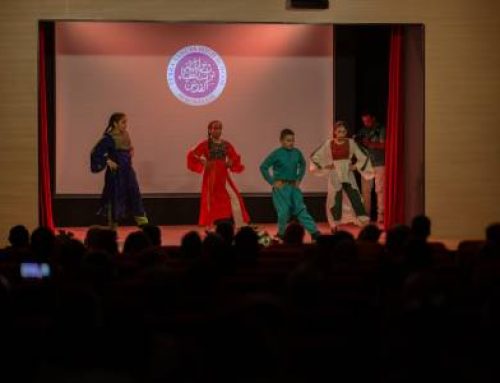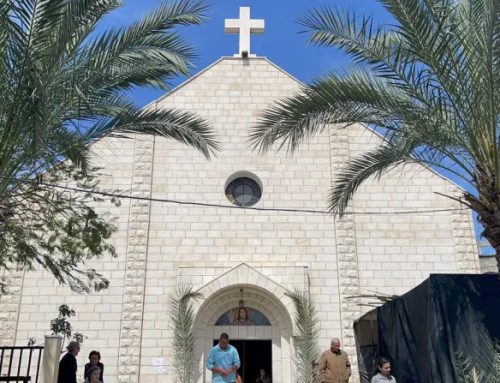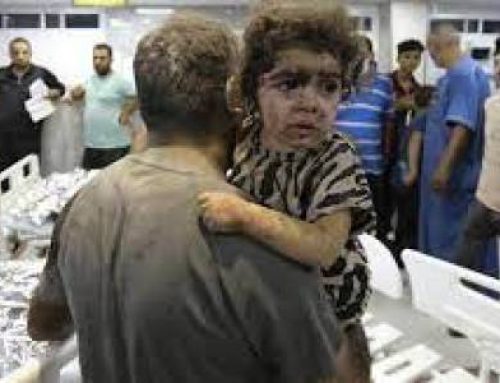Like many of the world’s most ancient communities, part of the charm of Jerusalem’s Old City is its narrow, clambering streets and the hidden corners known only to the locals.
Like many of the world’s most ancient communities, part of the charm of Jerusalem’s Old City is its narrow, clambering streets and the hidden corners known only to the locals. It is not uncommon for pilgrims and other visitors to lose their way, and many Jerusalemites have become self-styled guides, leading foreigners to spectacular views a good ways off the beaten track. For all the guidebooks ever published, still the overwhelming majority of the Old City’s nooks and crannies remain unexplored by visitors, and this mystery is part of Jerusalem’s appeal.
Somewhat less appealing – but every bit as mysterious – is Jerusalem’s recent history, especially the Old City. It’s a checkered past, to be sure.
In 1948, Jerusalem was a military battlefield, the site of a major Israeli offensive and Arab counter-offensive. Thousands fled, becoming refugees who anticipated a return when the bullets stopped flying. A second war, in 1967, caused a second forced migration, followed by the Israeli government’s expropriation of abandoned homes which continued well into the 1990s. Many thousands that fled were not allowed a return, and many others had nothing to return to. Routinely condemned by even the U.N. Security Council, still the Israeli government was left free to unilaterally determine the fate of the city.
The physical toll the Israeli-Palestinian Conflict has taken on the infrastructure in Jerusalem is considerable, but it is even more pronounced within the walls of the Old City, where many buildings date back to Ottoman rule in the 16th Century and rest on foundations that predate even that period. Outside the Jewish Quarter, spending on repairs and improvements to the Old City’s streets and sewers is almost unheard of – often authorized by the government but with funding never allocated. Local ordinances also prevent reconstruction of buildings or additions made to homes inside the Old City, meaning that many structures there continue to slide into disrepair unchecked.
Perhaps lost in the shuffle of holy sites, the ubiquitous souvenir stands, and its fractured history is the fact that the Old City is still a living, breathing home to more than 32,000 people, including some 5,000 Arab Christians who live in the Christian Quarter around the Church of the Holy Sepulchre. That number, of course, is but a fraction of what it was before war and flight struck the community.
For those who have stayed, though, life has been very difficult – and increasingly so over the years. As elsewhere in Palestine, unemployment has rocked the Arab Christians in the Old City. Despite access to social services provided by Israel’s welfare programs, many do not take full advantage of these benefits – due to their inability to navigate paperwork in Hebrew or the fear that the Israeli government might find some pretext to revoke their identification and expel them from Jerusalem. Despair has ravaged the community, and unlike Christians in the West Bank and Gaza, the feeling of isolation has led far too many unemployed Jerusalemites into the throes of alcoholism and drug abuse.
Predictably, these troubles plaguing Arab Christians in the Old City have a disproportionate effect on the elderly who live in the community. Seniors in Jerusalem are almost entirely made up of the men and women who stayed in the city during the turbulent times in the 40s, 50s, and 60s. Many stayed even as all their other family members left. While this might not have been a great hardship at the time, in old age these seniors live without the natural support system of an extended family which is such a part of the fabric of Palestinian culture. Even those with children and grandchildren living in the Old City are not necessarily well taken care of, as most young Jerusalemites have a hard enough time meeting their own financial needs.
Much as younger generations might want to help their elders, most simply cannot afford to. Here, too, the grim spectre of substance abuse is a mitigating factor.
Many of a Jerusalemite senior’s needs match those of the elderly in the rest of the world. Financial independence in retirement, proper healthcare, and social outlets are near-universal. But the unique character of the Old City often makes meeting these needs into an extraordinary challenge. Narrow streets, for example, make it harder for seniors who leave the home for medical treatment or other appointments. Disabled men and women face particular hardships on this score, and it is not as though the millennia-old neighborhoods are wheelchair accessible.
Stepping in to meet the obvious needs of the Old City’s Christian senior citizens is the Elderly Supportive Community Services Center (ESCS), a non-profit organization founded in 2000 by a group of concerned locals whose status as native Jerusalemites made them uniquely qualified for this ministry. Led by Mr. Jeries Shamma, a rising Greek Orthodox priest born and raised in the Old City, ESCS has capitalized on its insider knowledge of the Old City to identify more than 450 senior citizens (aged 60-108) in need of healthcare, legal consultation, and good company.
Shamma, his staff, and network of more than 200 volunteers have transformed a quiet alley and small office in the Christian Quarter into an open gathering place for the neighborhood’s elderly Christians. From the Center’s modest facilities comes extraordinary care. Daily, nurses monitor blood pressure to prevent cardiac disease and check blood-glucose levels to forestall the onset of Type II diabetes. A Jerusalem trial lawyer visits monthly to educate seniors on their basic human rights, walk some through the hurdles of securing their social security payments, and provide counsel in cases where litigation might be warranted. Weekly prayer meetings also fill the Center’s already cramped office space with an ecumenical blend of the faithful, and this is just one of ESCS’s in-house social offerings.
But ESCS is not content just to leave the doors open as a haven for the community’s elders. Outreach is the Center’s driving concern. Its nurses make house calls (up to 30 each day) to care for the bedridden and fearful. ESCS’s volunteers also pay visits to the seniors’ homes, often tasked with doing the week’s shopping or cleaning the living space. Even if there is no specific chore to be done, volunteers make it a point to pay social visits as well, which helps integrate elders back into the life of Old City and stave off loneliness. Seasonal excursions also draw the seniors out of their homes and into each other’s company. In addition to the obvious benefit person-to-person contact has for the seniors, drafting local youth into this volunteer corps introduces the next generation to the importance of looking after the elderly – while keeping them occupied and away from other, less savory activities.
Support for Shamma and ESCS has come from far and wide. The Finnish government, after sending diplomats to get acquainted with the Center’s operations, has committed itself to covering all of ESCS’s administrative costs through 2008. The British Consulate in Jerusalem donated a half-dozen wheelchairs, which volunteers use to shuttle disabled seniors in and out of the Old City for hospital visits. To supplement the Center’s social program, the Pontifical Mission for Palestine has expressed interest in donating several classic looms (the type used to do traditional Palestinian embroidery) for use by the seniors. It’s an offer Shamma would gladly accept if only he had the space for them.
And space really is ESCS’s most pressing need. Despite the good work already being done and the number of seniors already brought into the fold, the Center’s staff freely admits that they have only scratched the surface of the Christian Quarter’s need. They know there are more seniors out there who would be well served by ESCS’s programs, and they acknowledge that their operations could be run more efficiently and expanded if given the proper setting. All of which makes a recent donation from the local Greek Orthodox Patriarchate even more significant.
Much maligned in recent months for selling large swaths of Old City land to the Israeli government, the Patriarchate has recently agreed to lease one of its properties in the Christian Quarter to ESCS. The building is in the very heart of the Old City, not fifty yards from the Church of the Holy Sepulchre and facing one of the neighborhood’s widest thoroughfares.
Last used as youth hostel – and adjoining seedy tavern – some fifteen years ago, the space has since fallen into a sad state of disrepair. Old beds and mattresses litter most of its rooms. The interior is in need of restoration, especially the bathrooms and kitchen. There is some question of the structural integrity of one wall. In short, the space is a long way off from functioning as place where the Old City’s elderly Christians can come for medical treatment, legal advice, and community. Estimates commissioned by Shamma measure the gap at somewhere between $50,000 and $100,000.
ESCS’s director is not discouraged in the least. On a tour of this prospective new center, Shamma moves through the rubble with the ease of familiarity and an obvious vision of its future. What appears to be the forgotten remnants of a dank bar, he pronounces a sitting room, a place where his community’s elders will gather for good coffee and better conversation. The erstwhile bedroom becomes an embroidery workshop in his eyes. His passion and hope transform other rooms into dining halls and health clinics as well. Shamma is already preparing himself and ESCS for this brighter, more productive future.
He is confident that support for the Center’s work is not too far behind.





